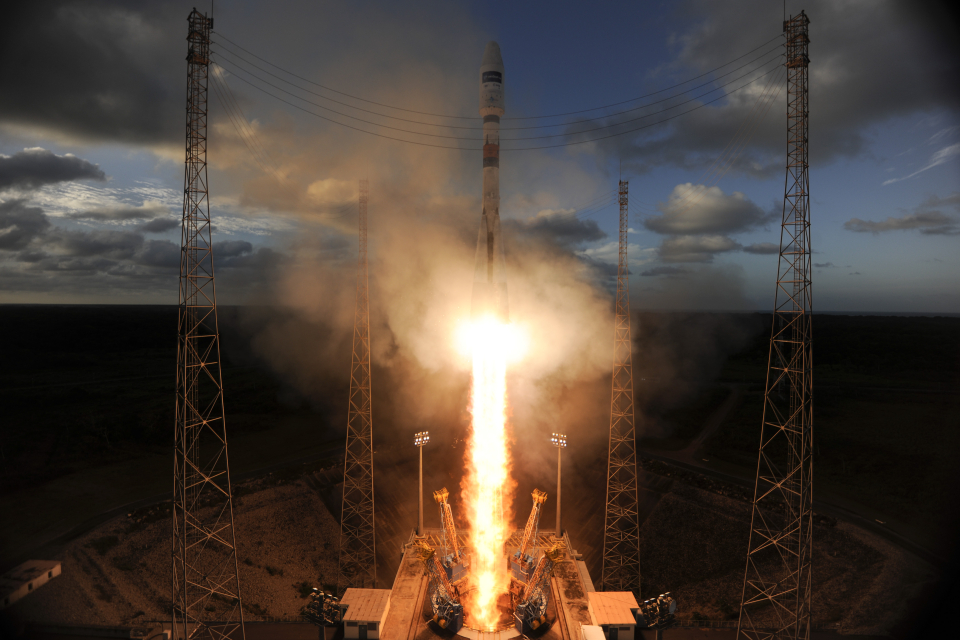Sentinel-1A and Sentinel-1B were launched on 3 April 2014 and 25 April 2016, respectively, via a Soyuz rocket from Europe's Spaceport located in French Guiana. Unfortunately, the younger of the two, Sentinel-1B, encountered an anomaly in December 2021 that resulted in the loss of its ability to provide radar data. Sentinel-1A however is still fully operational. To restore the satellite constellation, Sentinel-1C is scheduled for launch in the first half of 2023.
The Sentinel-1 mission is the result of close cooperation between the European Space Agency (ESA) the European Commission (EC), industry, service providers and data users. The satellites were designed and built by a consortium of around 60 companies led by Thales Alenia Space and Airbus Defence and Space.
The C-SAR instrument onboard the Sentinel-1 satellites builds on ESA's and Canada's heritage SAR systems on ERS-1, ERS-2, Envisat and Radarsat. The mission has multiple benefits for various services such as monitoring the extent of Arctic sea-ice, creating routine maps of sea-ice, keeping a watchful eye on the marine environment by detecting oil spills and ships for maritime security, assessing land-surface for potential risks related to motion, producing maps for forest, water, and soil management, and creating maps to provide aid in humanitarian crises.
Sentinel-1 was the first mission developed under the Copernicus umbrella, and all of the data it gathers is made available to everyone on earth. Together with its sister constellations it has transformed Copernicus into the largest provider of Earth observation data in the world.

Soyuz VS07 with ESA’s Sentinel-1A satellite lifted off from Europe’s Spaceport in Kourou, French Guiana, on 3 April 2014.
Sentinel-1 constellation
| Satellite | Sentinel-1A | Sentinel-1B | Sentinel-1C | Sentinel-1D |
| Launch Date | 3 April 2014 | 25 April 2016 | 2023 | |
| End Date | 3 August 2022 | |||
| Status | Operational | Decommissioned | Planned | Planned |
| Orbit type | Polar, sun-synchronous | |||
| Altitude | 693 km | |||
| Orbit inclination | 98.18° | |||
| Orbit period | 98.74 minutes | |||
More on Copernicus
The Copernicus Programme is an Earth observation initiative that forms a crucial part of the European Union Space Programme. Managed by the European Commission in collaboration with various European organizations such as the European Space Agency (ESA), the European Organisation for the Exploitation of Meteorological Satellites (EUMETSAT) and the European Centre for Medium-Range Weather Forecasts (ECMWF), Copernicus aims to establish a comprehensive Earth observation capacity that is global, continuous, autonomous, and of high quality. The primary objective of the programme is to provide accurate, timely, and easily accessible information to improve environmental management, understand and mitigate the impacts of climate change, and ensure civil security.
Click here to visit our dedicated Copernicus page